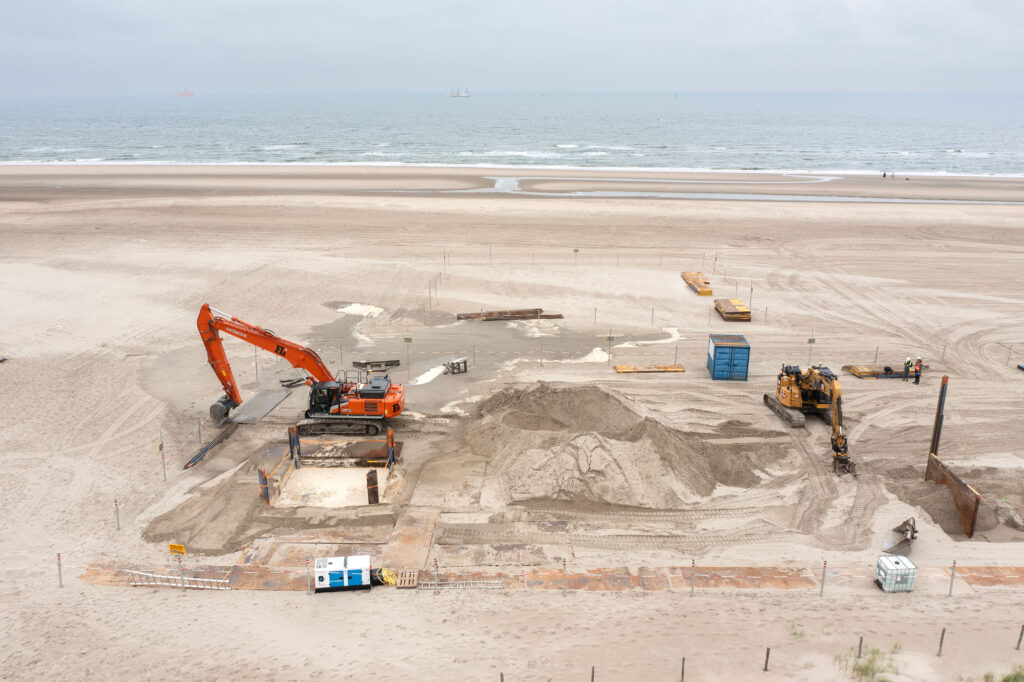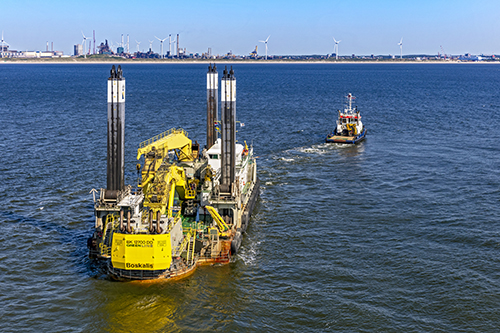Wind Energy – Unexploded Explosives
Excavation work started this week on Velsen beach in the Netherlands to remove seven obstacles from the sand at a depth of several metres.

Those targets were located during the earlier investigation for unexploded explosives from World War II. The objects will be removed for the construction of the sea cables, which TenneT will use to bring the energy of the offshore wind farm Hollandse Kust (west Beta) ashore from 2026.
Next autumn, south of Wijk aan Zee on the Velsen beach, work will start on the connection of the Hollandse Kust (west Beta) wind farm. “Using technology attached to a drone, we looked down into the soil to a depth of about ten metres,” Kelvin Bastiaan, project manager for marine cables Hollandse Kust (west Beta) on behalf of TenneT, explains. “This is how we found 13 ‘suspect locations’ in the beach.”
By investigating and removing obstacles on the cable route, TenneT wants to create the safest possible situation on land and at sea for both employees and the power cables.
Most of the NGE survey was, of course, carried out offshore. Simultaneously with the excavation work on the beach, contractor Boskalis is removing some obstacles off the coast for the laying of the sea cables. Bastiaan: “These are not explosives, but things like boulders, fishing nets, steel cables or debris. A large crane on a ship is used for this, which can excavate 36 cubic metres with one shovel. Afterwards, they check the route again at sea with a ripper tooth.”

